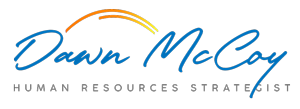HR Matters!
Human Resources. Some people are huge fans. Some find HR a necessary annoyance, and others avoid HR like the plague. In reality, perceptions about HR change depending on what is happening, both internally and externally, at any point in time. Take the past year for example. With the COVID-19 pandemic, HR has stepped up as a valuable business partner, working hard towards helping employees get set up to work from home, frantically writing and rewriting outdated policies, escalating digital transformations to support work from home, all the while continuing with their regular workload. The status of HR has been elevated in many municipalities and, at least for the time being, their value has been proven to the organization. The pandemic has provided that opportunity to move beyond the administrative, compliance focused HR function that many municipalities have been used to.
Unfortunately as the Harvard Business Review article Why We Love to Hate HR… and What HR Can Do About It (July-August, 2015) puts it, “complaints against HR… have a cyclical quality. They’re largely driven by the business context.” When it is business as usual, and there is no opportunity to show their value, HR tends to fade into the background with a focus on policy and legislative enforcement and administration. HR often gets caught up in administrivia – things like payroll, booking training, maintaining employee files, following up on documentation, screening resumes, and reviewing performance reviews. They may get caught up in the trap of checking off the boxes and making sure everyone does what they are ‘supposed’ to do.
Historically, the need for a human resources department developed to provide organizational support in hiring employees, pay and benefits, and keeping the organization apprised of legislative requirements related to Human Resources – all non-strategic transactional roles. In fact, many municipalities originally hired their first HR person specifically for this reason. Because this need has not changed, HR continues to be responsible for administrative issues. There is not one person in the organization who is not impacted in some way by an HR driven directive or procedure. Sadly, HR often was and still may be perceived as a roadblock by other departments and not a strategically focused business partner.
In defense of HR, while managers may find consulting HR irritating and time consuming, many a manager has been relieved when it came time to terminate a poor performer to find their financial exposure was limited because of the documentation HR kept hounding them for. And often, when an employee turns out to be a “problem employee”, there had been an HR professional suggesting this person would not be a good fit or advising against the hire.
Many a senior executive has said they believe HR has a place at the executive table only to find their HR team does not have the skills or business experience to play a strategic role. HR wants to be at the senior leadership table, but often are so caught up in administrivia and detail, they do not see the bigger organizational picture. Recommendations are typically presented based on what Alberta based CAO, Peter Tarnawsky calls soft human imperatives such as gut feelings, perceptions of others, heresay, but are not presented in the context of business strategy or using data to back the recommendations. He believes hard data helps to drive decision making – like the numbers and cost of turnover in a specific department driving the need to reorganize the function.
AIHR (Academy to Innovate Human Resources) is a global organization specializing in ‘future-proofing’ HR. The AIHR Competency Framework identifies what it takes to be a modern and relevant HR Professional who drives business value across the full HR spectrum. They talk about more strategic, T-Shaped HR Professionals.
The T-shaped HR professional model is based on the premise that HR professionals need to have more than just technical skills or functional competencies. In order to drive value and become a strategic business partner, HR needs to be data driven, have an understanding of how the business operates, and drive digital transformation, all while performing the traditional role of people advocate. This is required in addition to having a solid base in the functional competencies required to be effective in the HR role.
So while HR is typically valued for their technical/functional competencies, there is so much more HR can offer. There is no advantage to having a Human Resources manager as part of the leadership team if they do not understand the business thereby limiting their role at the strategic table. For Human Resources to truly become a strategic business partner, they will need to develop systems to gather and provide the data for managers to make decisions, develop an understanding of business strategy and needs, up the organization’s game digitally to facilitate people management, and also be able to advocate for people when there is unfair treatment. They will also require the Human Resources specific technical skills and legislative knowledge needed to support the organization.
Tarnawsky believes there is a place for HR at the senior leadership table. “HR can provide strong advocacy for the people side of change as they provide a window into the organization and a view of blind spots that leadership may not see.” Just putting HR on the Senior Leadership team may not be enough, however. What can a CAO do to prepare their HR team to step up their game? HR needs to become more business savvy, look at HR recommendations from a strategic perspective, begin using data to back their recommendations and change their reputation as gatekeepers and ‘compliance cops’.
In order to achieve this, HR need to truly become partners in the organization, not be seen as a hurdle to overcome. They need to work towards helping the organization and other departments achieve their goals – finding a way to say yes, speed up things when needed, and working from an overall business lens, not a bureaucratic lens.




